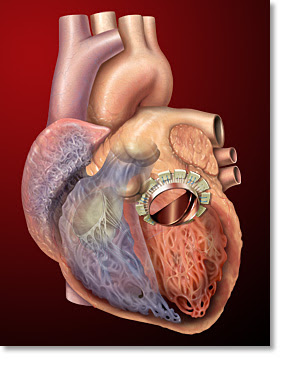This is my 7
th post and the final one, and I have been having a dilemma whether to complete what I have written in my first three posts about design of clinical trials or to write about a presentation that I am preparing for tomorrow regarding risks associated with ionizing radiation and in particular CT scans. I will spend time on clinical trials the end of August when we all present for the
BME department, so I thought let's devote the final blog to explain how effective-dose for a regular CT scan is calculated and what does this number biologically mean.
According to the FDA, there are two categories of risk associated with ionizing radiation: 1)
Overdiagnosis of benign incidents and unnecessary followup tests and 2) acute and chronic biological damages associated with radiation. The
excitation and ionization of molecules and atoms in the body can produce free radicals, break chemical bonds, and cross-link
macromolecules. That's why the effects of radiation exposure are not necessarily immediate. In general, radiation sensitivity of bodily tissues depend on two factors: 1) the rate of proliferation and 2) its degree of differentiation. Thus, tissues with a lot of blood supply (i.e.
proliferative capability) are most radio-sensitive and tissues that are far advanced (i.e. nervous tissue) are the least sensitive. Unfortunately there has not been
extensive studies to evaluate the relationship between radiation exposure and chronic biological effects such as cancer induction. Therefore, any data available in this regard is based on the conservative notion that any amount of ionizing radiation is harmful to the body. Keep in mind that all of the numbers in this post are national estimates.
Radiologists use different
jargon to measure radiation. There is what is called absorbed dose, which is simply amount
of energy deposited per unit mass of matter with units in Gray (
Gy) or
mGy. Then is equivalent dose which measures the "biological effects" of the absorbed dose to each tissue of the body. This parameter is a product of absorbed dose and a factor called "radiation weighing factor" which takes into account the radio-sensitivity of different tissues. The final and most important parameter is the effective dose which is the weighted average of absorbed doses to all bodily tissues. For CT, in order to calculate effective dose one has to integrate the dose profile along a line parallel to the axis of rotation of the gantry and
devided by the nominal thickness of the slice. However, since this is a bit complicated, physicists introduced a new term called the CT dose index (
CDTI) which is measured experimentally. A 100mm ionization chamber will be placed in the center of a head and body phantom and the absorbed dose in measured at the center and periphery. A specific ration of these two values are added up to give a two
dimensional weighted
average of
CTDI. When this number is divided by pitch (ratio of the distance the
patient has moved through the scanner per rotation, per slice thickness) then you will have a volumetric absorbed dose. Once you multiply this
CTDI(vol) by the length of scan and the radiation weighing factor for the specific tissue you are scanning, you have the effective dose in units of
seivert or
mili-
seivert (
mSv).
Now some interesting numbers and statistics....
The effective dose of a regular chest x-ray is 0.02
mSv, or if you get a dental x-ray your bone marrow is exposed to 0.094
mSv. If you get a regular chest CT (high resolution) you are exposing yourself to 500x more radiation than a chest x-ray (10
mSv) while if you get a head CT you are exposing yourself to 100x more radiation than a chest x-ray.
We are all exposed to background radiation due to sources other than medical
imaging modalities (shown bellow). The annual background radiation in the USA is around 3.0
mSv. So a regular chest CT is equivalent to 3.3 years worth of background radiation. This will increase your chances of getting cancer by 0.04% (with natural cancer risk being 20.6%).

National Council on Radiation Protection and Measurements, Bethesda, MD














